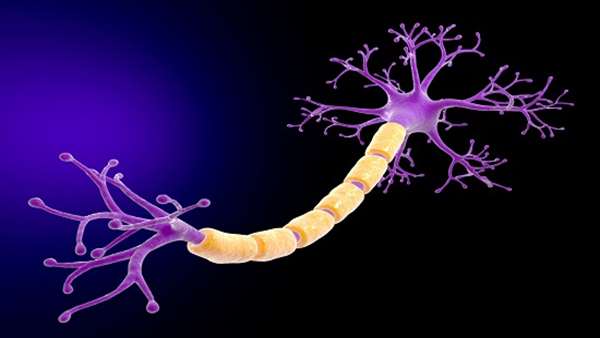Transdifferentiation of human adult peripheral blood T cells into neurons
Recent advances in genomics have revealed that many polygenetic diseases are caused by complex combinations of many common variants with individually small effects.
Recent advances in genomics have revealed that many polygenetic diseases are caused by complex combinations of many common variants with individually small effects. Thus, building informative disease models requires the interrogation of many patient-derived genetic backgrounds in a disease-relevant cell type. Current approaches to obtaining human neurons are not easy to scale to many patients. Here we describe a facile, one-step conversion of human adult peripheral blood T cells directly into functional neurons using episomal vectors without the need for previous in vitro expansion. This approach is more amenable than induced pluripotent stem cell-based approaches for application to larger cohorts of individuals and will enable the development of functional assays to study complex human brain diseases.
Human cell models for disease based on induced pluripotent stem (iPS) cells have proven to be powerful new assets for investigating disease mechanisms. New insights have been obtained studying single mutations using isogenic controls generated by gene targeting. Modeling complex, multigenetic traits using patient-derived iPS cells is much more challenging due to line-to-line variability and technical limitations of scaling to dozens or more patients. Induced neuronal (iN) cells reprogrammed directly from dermal fibroblasts or urinary epithelia could be obtained from many donors, but such donor cells are heterogeneous, show interindividual variability, and must be extensively expanded, which can introduce random mutations. Moreover, derivation of dermal fibroblasts requires invasive biopsies. Here we show that human adult peripheral blood mononuclear cells, as well as defined purified T lymphocytes, can be directly converted into fully functional iN cells, demonstrating that terminally differentiated human cells can be efficiently transdifferentiated into a distantly related lineage. T cell-derived iN cells, generated by nonintegrating gene delivery, showed stereotypical neuronal morphologies and expressed multiple pan-neuronal markers, fired action potentials, and were able to form functional synapses. These cells were stable in the absence of exogenous reprogramming factors. Small molecule addition and optimized culture systems have yielded conversion efficiencies of up to 6.2%, resulting in the generation of >50,000 iN cells from 1 mL of peripheral blood in a single step without the need for initial expansion. Thus, our method allows the generation of sufficient neurons for experimental interrogation from a defined, homogeneous, and readily accessible donor cell population.
Reference:http://www.pnas.org/content/early/2018/05/30/1720273115





ارسال به دوستان